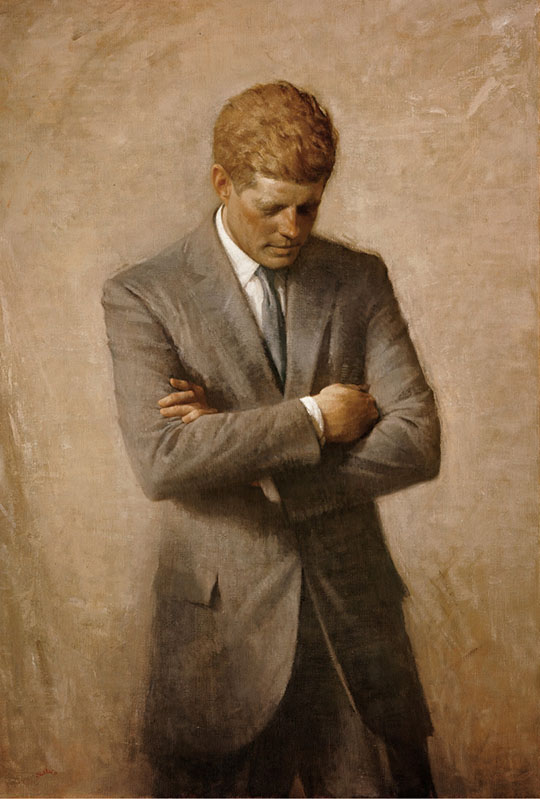Module 13: Contesting Futures: America in the 1960s
Section outline
-
In this module, you will explore the 1960s in the United States. Though most likely did not realize it, In the 1960s, Americans lived in the most economically prosperous decade, in the most economically prosperous country in all of human history. In the atmosphere of such a flourishing time, the country's new and dynamic President, John F. Kennedy, nonetheless challenged his fellow Americans to "...ask what you can do for your country," and admonished his fellow citizens to do their part to meet the social, political, and foreign policy challenges that still abounded around the nation. Image from Chapter 29 of U.S. History (opens in new window) from OpenStax, licensed under Creative Commons Attribution License v4.0 with the image information: In Aaron Shikler’s official portrait of John Fitzgerald Kennedy (1970), the president stands with arms folded, apparently deep in thought. The portrait was painted seven years after Kennedy’s death, at the request of his widow, Jacqueline Kennedy Onassis. It depicts the president with his head down, because Shikler did not wish to paint the dead man’s eyes.
Image from Chapter 29 of U.S. History (opens in new window) from OpenStax, licensed under Creative Commons Attribution License v4.0 with the image information: In Aaron Shikler’s official portrait of John Fitzgerald Kennedy (1970), the president stands with arms folded, apparently deep in thought. The portrait was painted seven years after Kennedy’s death, at the request of his widow, Jacqueline Kennedy Onassis. It depicts the president with his head down, because Shikler did not wish to paint the dead man’s eyes.
In 1960, though removed from slavery for nearly a century, African-Americans still did not enjoy the same levels of high post-war living standards that white Americans did, nor were voting rights widely available in much of the country. Despite Brown v. Board and other desegregation efforts of the 1950s, Jim Crow still prevailed across the South. Around the world, the Cold War with the Soviet Union intensified, the nuclear threat persisted, and (nearly) ignited over Cuba. In Asia, the U.S. was soon to be more and more involved in the "Big Muddy" quagmire of Vietnam. But the 1960s still began on a note of optimism, energy, and idealism. For a time JFK was the charismatic face of good times and visionary ideas, but by 1963, JFK fell victim to an assassin's bullet, and the 1960s were soon to take a much more challenging turn.
Upon completion of this module, you will be able to:
- Assess Kennedy’s Cold War strategy (CO 1-5)
- Describe Kennedy’s contribution to the civil rights movement (CO 1-5)
- Describe the major accomplishments of Lyndon Johnson’s Great Society (CO 1-5)
- Identify the legal advances made in the area of civil rights (CO 1-5)
- Explain how Lyndon Johnson deepened the American commitment in Vietnam (CO 1-5)
- Explain the strategies of the African American civil rights movement in the 1960s (CO 1-7)
- Discuss the rise and philosophy of Black Power (CO 1-7)
- Identify achievements of the Mexican American civil rights movement in the 1960s (CO 1-5)
- Describe the goals and activities of SDS, the Free Speech Movement, and the antiwar movement (CO 1-7)
- Explain the rise, goals, and activities of the women’s movement (CO 1-5)
To achieve these objectives:
- Read the Module 13 Introduction above.
- Read and view the materials in Module 13 (click below)
- View the Module 13 PowerPoint below.
- Complete Module 13 quizzes/assignments/discussion boards based on chapter/document reading.
Module Pressbooks Resources and Activities
You will find the following resources and activities in this module at the Pressbooks website. Click on the links below to access or complete each item.
Background Colour
Font Face
Font Kerning
Font Size
Image Visibility
Letter Spacing
Line Height
Link Highlight
Text Colour
